What is the Best Type of Concrete Screed for Flatwork?
There is a wide variety of concrete screeds available on the market. This article examines the top concrete screed options for pouring flatwork, focusing on applications like warehouse floors, parking lots, and agricultural buildings. The short answer? Laser-guided screeds.
What is Screeding Concrete?
Screeding concrete is the process of using a straightedge tool to level and smooth freshly poured concrete. This action helps push larger aggregates down while creating a smooth surface. Some screeds include a vibrating rod, which further compacts the material, settling larger particles and leaving a sand and cement slurry on top.
Laser-Guided Screeds
Laser-guided screeds are among the most efficient and precise screeding tools available. They help contractors achieve high flatness standards while reducing labor costs. These machines come in two main types: drive-in and boom screeds.
Drive-in screeds offer a lower initial cost, making them a budget-friendly contractor option. However, they require driving through the concrete and over rebar, which can be a drawback.
Boom screeds, on the other hand, are the industry’s top choice. Their extended boom allows the machine to remain outside the concrete, and foam-filled tires enable movement over rebar. Some models can extend up to 20 feet, delivering large screed passes for increased efficiency. Many boom screeds also feature SCREEDSHIFT® technology, which allows the screed head to adjust while extended—ideal for maneuvering around obstacles like piping.
For smaller contractors, hybrid options combine the benefits of both types. The Ligchine® LS120® is the first machine to offer drive-in and boom-screeding capabilities in one unit.
With a range of laser-guided screeds available for different budgets, these machines provide unmatched precision and labor savings, making them a valuable investment for concrete contractors of all sizes.
Roller Screeds
Roller screeds are mainly utilized for small residential pours rather than commercial jobs. Roller screeds can be used on contoured slopes, like a steep driveway. Laser-guided screeds can also be utilized on contoured slopes with a 3D package and LPS. Roller screeds require a lot of physical labor and are not labor-saving like a laser-guided screed. A roller screed has no vibration systems, and you don’t get the advantage of a vibrating rod like you do with a laser-guided screed.
Truss Screeds
Truss screeds are a good choice for contractors with a large crew, as they can screed large amounts of concrete. However, they are heavy, require significant effort to set up, and need multiple workers to rake down the concrete to operate effectively.
Mistakes made with a truss screed are challenging to correct and often require a hand float or a 2×4 for adjustments. Unlike laser-guided screeds, which offer significant labor savings, truss screeds demand a substantial workforce. Additionally, they can create waves in the concrete that are not easily smoothed out with a bull float.
Vibratory Screeds
Stand-up vibratory screeds are ideal for smaller commercial pours. Their key advantage is the vibrating bar, which levels the concrete while bringing a cement slurry to the surface. This process helps prevent cracks and improves the concrete’s durability.
Laser-guided screeds incorporate a similar design, featuring vibrating rods in their screed heads. Stand-up vibratory screeds still require significant manual labor, as an operator must walk behind and drag the screed, and additional crew members are needed to rake the concrete.
2X4s / Strike Off
The traditional method of screeding concrete uses a 2×4, typically reserved for very small commercial pours or DIY projects by homeowners. While simple and accessible, this approach demands significant physical effort, making it one of the most strenuous ways to screed concrete.
What Is the Best Type of Concrete Screed for Flatwork?
A laser-guided screed is the ideal screed for pouring flatwork. These machines integrate the benefits of various screed types with precision laser technology, ensuring superior accuracy and efficiency. Despite their advanced capabilities, laser boom screeds are designed for user-friendly operation, with many manufacturers offering on-the-job training.
Most laser-guided screeds come equipped with 2D receivers and the option to upgrade to a 3D local positioning system. They also feature a vibratory finish blade and auger in the screed head, often accompanied by an additive spray system for enhanced performance.
If you’re a contractor handling more than just small residential projects, a laser-guided screed is the best choice for pouring flatwork.
For more information on laser-guided screeds, contact Ligchine at 812-903-4500.
About Ligchine: Ligchine® is a global leader in innovative and labor-saving concrete machinery. Since its founding in 2008, the company has rapidly expanded its position in the market and offers a complete line of automated concrete screeding and placing machines that service flatwork companies from small owner-operated businesses to large global concrete contractors. The company’s headquarters, engineering, and manufacturing are located in the United States. In addition to a direct sales force in the U.S., the company has an extensive network of international dealers and partners to serve customers anywhere in the world.
Media Contact:
Heather Hughes
[email protected]




